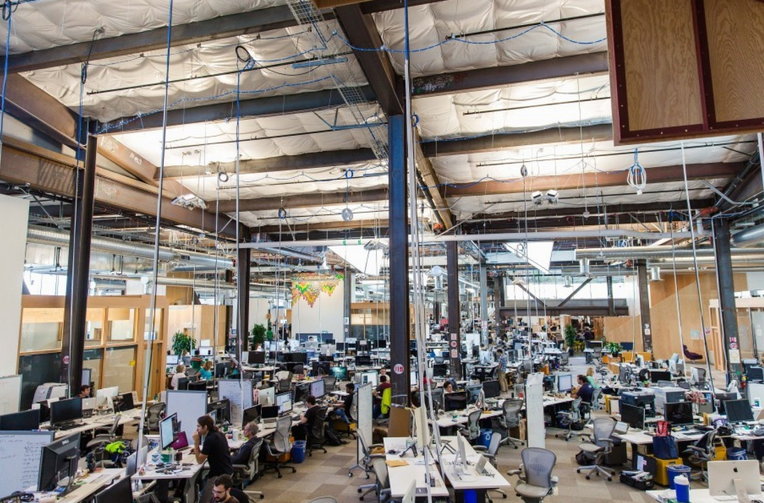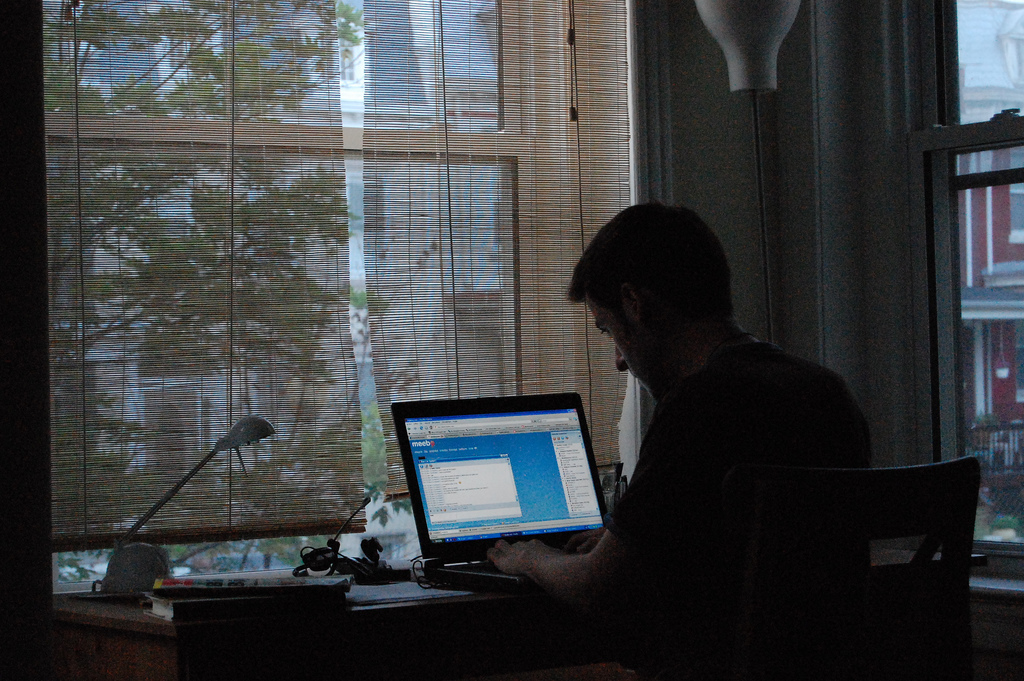Are Open Office Environments Conducive to Greater Collaboration & Productivity?
Or not? There is a current trend in designing new office spaces around a wide open concept, in extreme cases providing seats at long contiguous tables in lieu of individual desks. The days of semi-private cubicles may be numbered. Partitions of any type are becoming scarce in many companies, even for managers and some executives.
In complete contrast, back in the 1980’s when Microsoft moved its corporate headquarters to a brand new campus in Redmond Washington, virtually every employee was provided with a private office — 4 real walls and a door (and a window for the lucky ones). And how did that work out for Microsoft? That’s in the history books.
Now companies like Facebook and others are literally breaking down the physical barriers and counting on greater employee engagement within the organization. In fact, Facebook’s headquarters is the largest open office environment in the world (see picture).
Another addition to this new concept actually eliminates tables in favor of bar-height countertops and NO CHAIRS. Who doesn’t need to get up from their desk and stretch out for a while? But standing for 8+ hours?
Today’s modern paperless (read “green”) office requires much less cabinet and desk drawer space than in past years, but a countertop desk? I suppose those waste buckets are just meant for empty Red Bull cans and Starbucks cups.
So who is right, Microsoft or Facebook? And should employees have a voice in extreme office renovations? What about issues of privacy? Noise levels? And how is employee morale impacted?
These are all fair questions that HR and management need to address when redesigning office space. Small accessible meeting rooms can solve the occasional need for privacy. Headphones can reduce noise levels (rather mask them). Morale is another matter. Imagine no personal to-do boards, no family photos, no knickknacks on the desk. No room for anything but a phone, laptop, and maybe a legal pad. That’s about it. No distractions…other than hundreds of your fellow worker bees only a few feet away.
One obvious advantage however is the ease of collaboration. Open offices encourage interaction between employees, which is a good thing. In business today, team collaboration is proven to be far more productive than individual contributions. The sum is greater than the parts. Also, there is no class warfare where one is perceived as more or less important based on the size or location of their workspace. Even Mark Zuckerberg works right out in the open alongside his troops.
An open office is the antithesis of telecommuting, which offers its own advantages and disadvantages. One possible alternative is a mix of both — some days work from home and other days work in the office. In this scenario employees are offered the best of both working environments. Greater flexibility generally improves employee satisfaction, and by extension greater productivity.
In the end, what really matters to the organization is the quality and dedication of their employees. The best employees will adapt to whatever office setup the company designs. However, for the general population of workers, any existing morale issues may be amplified by an unsatisfactory work environment. Many people will not embrace radical changes in the office, especially if their personal workspace has been degraded.
It is one thing to hire a new employee, introducing him/her to the fancy new open office. It is quite another matter to force current employees into what they may perceive as downgraded working conditions. HR must be a partner in any decision to modify the office, and surveying for employee preferences can add additional insight into how the new office will be accepted.
The offices portrayed in the TV series Mad Men may be dinosaurs of the past, but will a virtual warehouse working environment portend the future? Time will tell. Certainly Facebook is making its own history just as Microsoft did 30 years ago.







